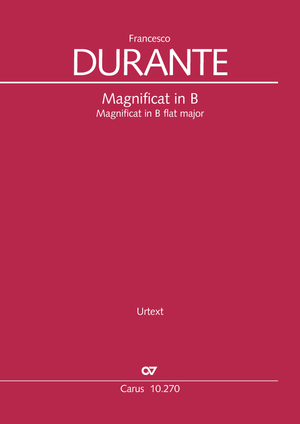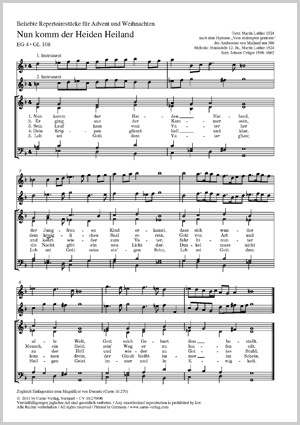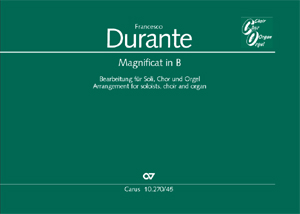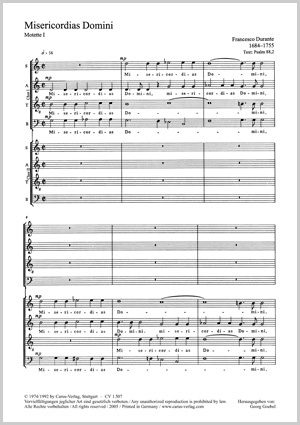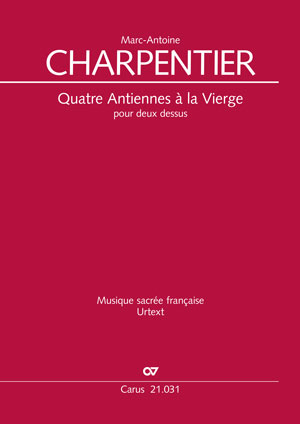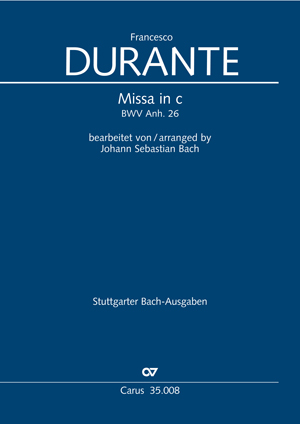Magnificat en si bémol majeur
Francesco Durante (1684-1755) était très estimé par ses contemporains, et à la fin du XIXe siècle encore, il est désigné comme « un des plus importants compositeurs italiens de musique sacrée et professeurs de musique de tous les temps » dans la littérature spécialisée. Son Magnificat in B fait incontestablement partie de ses compositions les plus importantes et des principales mises en musique de ce texte sous forme de cantate. L’écriture polyphonique traditionnelle y est magistralement associée à des éléments modernes du classicisme primitif.
Complément : 6 pièces chorales pour Noël pour chœur SATB en supplément : partition pour le chœur (Carus 10.270/06), chœur et orgue (Carus 10.270/46).
Également disponible dans un arrangement pour chœur et orgue (Carus 10.270/45).
Complément : 6 pièces chorales pour Noël pour chœur SATB en supplément : partition pour le chœur (Carus 10.270/06), chœur et orgue (Carus 10.270/46).
Également disponible dans un arrangement pour chœur et orgue (Carus 10.270/45).
Acheter
Informations complémentaires sur l'œuvre
-
Compositeur
Francesco Durante
| 1684-1755Francesco Durante (1684–1755) was highly esteemed by his contemporaries, and even at the end of the 19th century he was still described in musical literature as "one of the greatest Italian church composers and composition teachers of all time." Plus d'information sur la personne
-
Éditeur
Diethard Hellmann
| 1928-1999
-
Éditeur de réductions pour piano
Gerhard Klumpp
| 1945
Questions fréquentes sur l'œuvre
 Il n'y a pas encore de questions et réponses concernant cette œuvre ou vous n'avez pas trouvé la réponse à votre question sur l'œuvre ? Cliquez ici et envoyez votre question spécifique à notre service clients.
Il n'y a pas encore de questions et réponses concernant cette œuvre ou vous n'avez pas trouvé la réponse à votre question sur l'œuvre ? Cliquez ici et envoyez votre question spécifique à notre service clients.


